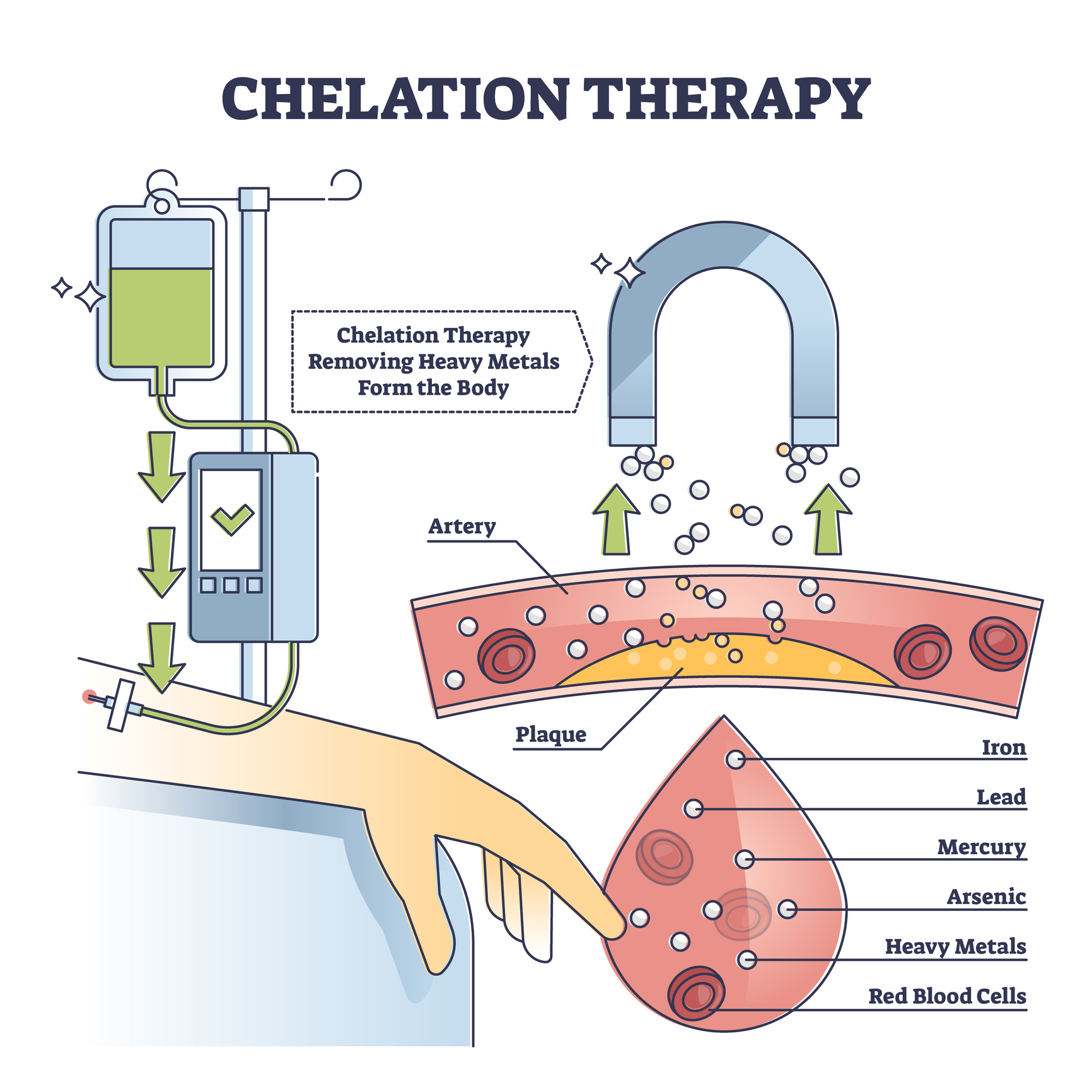Vascular chelation
Vascular Chelation is a gentle, non-invasive therapy designed to remove heavy metals and harmful toxins from your circulatory system. This method has been tried and tested over decades, and is based on the administration of a chelating agent that binds to these harmful elements and safely eliminates them from your body.
The Chelation Process
Vascular chelation begins with the intravenous administration of a chelating agent, most commonly ethylene diamine tetraacetic acid (EDTA). EDTA travels through your bloodstream, binding to heavy metals and other toxins, forming complexes that are then eliminated naturally by the kidneys and excreted in the urine.
The Benefits of Therapy
Vascular chelation therapy offers multiple benefits. It helps to alleviate the symptoms of various chronic conditions associated with the accumulation of heavy metals and toxins in the body. It also helps to improve cardiovascular health, reduce the risk of atherosclerosis and promote better blood circulation. It is also commonly used to promote general well-being and prevent illness by supporting a healthy immune system and eliminating the body's toxic load.

Indications for vascular chelation
- Heart disease (cardiac ischaemia, heart attack, angina pectoris, etc.)
- Hypercholesterolemia
- Atherosclerosis
- Peripheral vascular diseases
- Intermittent claudication
- Cerebrovascular diseases
- Certain neurodegenerative diseases (Parkinson's, Alzheimer's)
- Hypertension
- Diabetes
- Osteoporosis
- Heavy metal poisoning
- Potential cancer management
- Endocrinopathies (pre-diabetes, fructal hypothyroidism)
- Anti-Aging
Potential effects on cancer
In recent years, researchers have focused their attention on the possible effects of chelating agents on cancer. A 2002 study revealed that the use of a chelating agent, DFO (Desferrioxamine), reduced tumour growth. Heavy metals such as iron appear to play a crucial role in the proliferation of cancer cells, suggesting that chelation could be a potential tool in the fight against cancer.
Course of a session
A vascular chelation session begins with the insertion of a catheter into a vein in your arm. A solution containing the chelating agent is then slowly administered. The flow rate and concentration are adjusted according to your specific treatment protocol. Depending on the protocol, the session may last from 30 minutes to 3 hours. During the procedure, you can relax, read or even work on your mobile devices.
Protocoles Individualisés
At the Centre, we firmly believe in the importance of a personalised approach to healthcare. Before starting chelation therapy, a prior consultation with a doctor is necessary to determine your individualised treatment protocol. This process ensures that the treatment is perfectly tailored to your specific needs.

Frequency of sessions
Chelation therapy is generally not a one-off solution. To achieve the best results, it is often necessary to have several sessions. The frequency and total number of sessions will depend on your general state of health, your treatment goals and the nature of the heavy metals or toxins to be eliminated.Coupling with other therapies
Vascular chelation can be advantageously combined with other therapies, such as high-dose ozone therapy or infusions, to achieve synergistic effects. The same catheter can be used to administer these other treatments, making the process more efficient and more comfortable for you.

